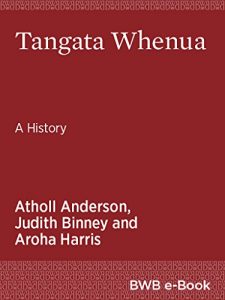Tangata Whenua: A History presents a rich narrative of the Māori past from ancient origins in South China to the twenty-first century, in a handy paperback format. The authoritative text is drawn directly from the award-winning Tangata Whenua: An Illustrated History; the full text of the big hardback is available in a reader-friendly edition, ideal for students and for bedtime reading, and a perfect gift for those whose budgets do not stretch to the illustrated edition. Maps and diagrams complement the text, along with a full set of references and the important statistical appendix.
Tangata Whenua: An Illustrated History was published to widespread acclaim in late 2014. This magnificent history has featured regularly in the award lists: winner of the 2015 Royal Society Science Book Prize, shortlisted for the international Ernest Scott Prize, winner of the Te Kōrero o Mua (History) Award at the Ngā Kupu ora Aotearoa Māori Book Awards, and Gold in the Pride in Print Awards.
The importance of this history to New Zealand cannot be overstated. Māori leaders emphatically endorsed the book, as have reviewers and younger commentators. They speak of the way Tangata Whenua draws together different strands of knowledge – from historical research through archaeology and science to oral tradition. They remark on the contribution this book makes to evolving knowledge, describing it as ‘a canvas to paint the future on’. And many comment on the contribution it makes to the growth of understanding between the people of this country.
Tangata Whenua: An Illustrated History was published to widespread acclaim in late 2014. This magnificent history has featured regularly in the award lists: winner of the 2015 Royal Society Science Book Prize, shortlisted for the international Ernest Scott Prize, winner of the Te Kōrero o Mua (History) Award at the Ngā Kupu ora Aotearoa Māori Book Awards, and Gold in the Pride in Print Awards.
The importance of this history to New Zealand cannot be overstated. Māori leaders emphatically endorsed the book, as have reviewers and younger commentators. They speak of the way Tangata Whenua draws together different strands of knowledge – from historical research through archaeology and science to oral tradition. They remark on the contribution this book makes to evolving knowledge, describing it as ‘a canvas to paint the future on’. And many comment on the contribution it makes to the growth of understanding between the people of this country.






